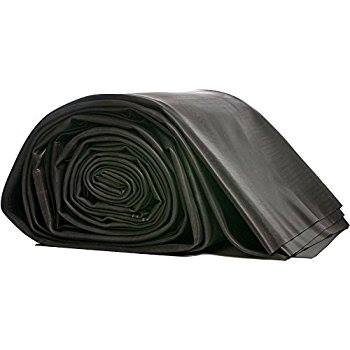HDPE Geomembrane Waterproof: A Comprehensive Guide
When it comes to creating a reliable and durable barrier against water infiltration, HDPE geomembranes stand out as a top choice in the industry. Whether you’re working on a landfill, a pond, or any project that demands high-performance waterproofing, HDPE geomembranes offer exceptional strength and reliability. In this blog post, we’ll explore what HDPE geomembranes are, their benefits, and how they can be utilized effectively in various applications.
What is HDPE Geomembrane?
High-Density Polyethylene (HDPE) geomembrane is a type of synthetic liner made from polyethylene with a high-density polymer. Known for its impressive waterproofing capabilities, HDPE geomembranes are used in a variety of applications where a reliable barrier against water and chemicals is essential.
Benefits of HDPE Geomembrane
- Superior Waterproofing: HDPE geomembranes are renowned for their excellent waterproofing properties. Their low permeability makes them ideal for preventing water leakage and soil contamination.
- Durability: The robust nature of HDPE geomembranes ensures long-lasting performance even in harsh environmental conditions. They resist punctures, tears, and UV degradation.
- Chemical Resistance: HDPE geomembranes are resistant to a wide range of chemicals, including acids, bases, and solvents, making them suitable for applications in chemical containment and waste management.
- Environmental Protection: By providing a reliable barrier, HDPE geomembranes help protect the environment from pollutants and contaminants, ensuring safer and cleaner surroundings.
- Ease of Installation: HDPE geomembranes are relatively easy to install, thanks to their flexibility and weldability. This can lead to faster project completion and lower labor costs.
Applications of HDPE Geomembranes
HDPE geomembranes are versatile and can be applied in various scenarios, including:
- Landfills: To prevent leachate from contaminating groundwater and soil.
- Ponds and Reservoirs: For waterproofing and preventing water loss.
- Mining Operations: To contain leachate and other waste products.
- Chemical Storage: For preventing leaks and spills in storage facilities.
- Construction: To manage groundwater and soil stability in construction sites.
Installation Tips
Proper installation of HDPE geomembranes is crucial for optimal performance. Here are a few tips to ensure a successful installation:
- Site Preparation: Ensure the site is clean and free of sharp objects that could puncture the geomembrane. A smooth and well-prepared subgrade is essential.
- Seam Welding: HDPE geomembranes are typically welded using heat fusion methods. Make sure that the welding is done by trained professionals to achieve strong, leak-proof seams.
- Quality Control: Regularly inspect the geomembrane for any defects or damage during installation. Conduct tests to ensure proper welds and adhesion.
- Maintenance: Post-installation, regular maintenance and inspection are important to address any wear and tear or potential issues.
Conclusion
HDPE geomembranes are a reliable and effective solution for waterproofing and environmental protection. Their superior durability, chemical resistance, and ease of installation make them a preferred choice in many industries. By understanding the benefits and proper installation techniques, you can ensure the longevity and effectiveness of your HDPE geomembrane projects.
For more information on HDPE geomembranes and their applications, you might find the following resources helpful:
- Geomembrane Technologies, Inc. – Detailed overview of HDPE geomembrane products and applications.
- American Society for Testing and Materials (ASTM) – Standards for HDPE geomembranes and testing methods.
- Environmental Protection Agency (EPA) – Landfill Liners – Information on the use of geomembranes in landfills.
By leveraging the benefits of HDPE geomembranes, you can achieve effective waterproofing and environmental protection for your projects. If you have any questions or need expert advice, feel free to reach out to industry professionals and explore additional resources.
Originally posted 2024-08-10 12:37:27.

